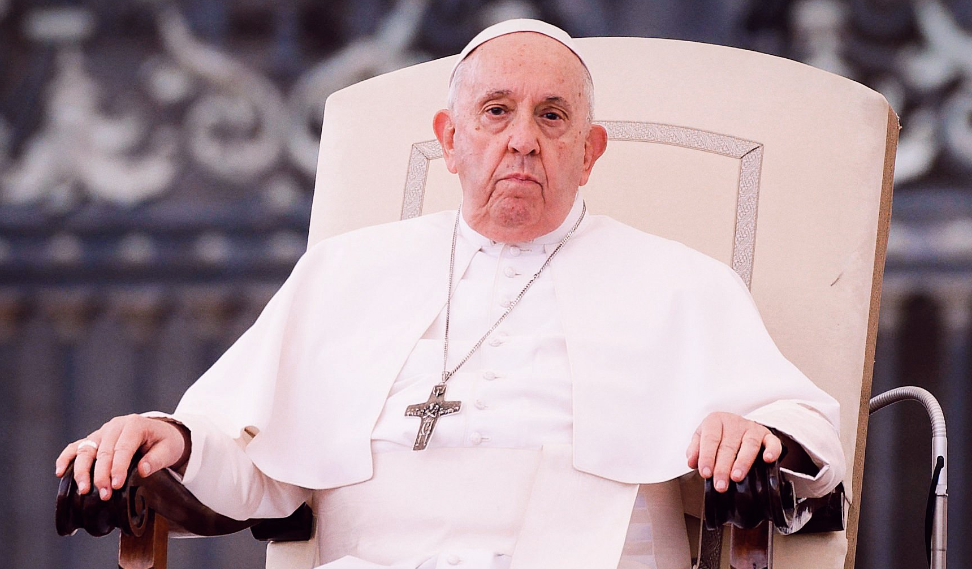The death of Pope Francis on April 21, 2025, following Easter, has ushered in the start of a solemn and secretive process that will ultimately determine the next leader of the Roman Catholic Church.
The period of interregnum, or the Sede Vacante ( Latin for vacant seat) is now underway, and with it, a series of carefully scripted rites and traditions will unfold before the College of Cardinals as they prepare to elect the 267th pontiff of the Church.

During the Sede Vacante, the heads of the Roman Curia lose their positions, except for the Camerlengo, which is currently held by Cardinal Kevin Farrell. He is responsible for managing the Church’s finances and property until a new pope is elected.
Apostolic constitution
The process of selecting a pope is governed by the apostolic constitution Universi Dominici Gregis, originally issued by Pope John Paul II in 1996, and later revised by Pope Benedict XVI in 2007 and again before his resignation in 2013.
According to these guidelines, the cardinals of the Church will determine when the conclave to elect the next pope should begin, which typically occurs no less than 15 days and no more than 20 days after the papacy becomes vacant.
Only cardinals under the age of 80 at the time of the pope’s death are eligible to vote, and among the 252 Catholic cardinals, only 135 hold voting rights.
Seclusion and secrecy
According to the Catholic News Agency, once the conclave begins, the cardinals are sequestered in private accommodations at the Domus Sanctae Marthae, a guest house adjacent to St. Peter’s Basilica within the Vatican.
They are cut off from the outside world, without access to phones, televisions, or newspapers, ensuring they are shielded from outside influences as they prepare to choose the next occupant of the ‘Chair of St. Peter.’
On the first day of the conclave, the cardinals will participate in a votive Mass in St. Peter’s Basilica, invoking the assistance of the Holy Spirit in their prayers.

They will then be led to the Sistine Chapel, where the cardinals will swear an oath to preserve the confidentiality of their discussions and voting decisionsadhering to the strict secrecy tradition outlined in Universi Dominici Gregis.
A trusted priest will then offer a meditation on the challenges facing the Church, urging the cardinals to act with discernment and with the well-being of the Universal Church at the forefront of their decision-making before exiting the room.
The election process
The conclave process typically involves several rounds of voting.
Each cardinal writes the name of their chosen candidate on a ballot, which is folded and then counted.
To be elected, a candidate must secure a two-thirds majority, and if no consensus is reached, the ballots are burned, and black smoke, fumata nera, emerges from the Sistine Chapel’s chimney, signalling an inconclusive vote.
White smoke, fumata bianca, signifies that a pope has been selected.
This voting process can extend over several days. For reference, the longest conclave of the 20th century, which elected Pope Pius X, lasted five days in 1903.
The election of Pope Benedict XVI in 2013 took two days, as did the election of Pope Francis.
A similar timeframe is expected this time, but if the process takes longer, voting can be paused for a day to allow the cardinals to reflect before continuing.
The chosen pope
The cardinals’ votes are not final until the elected candidate accepts the papacy.
In accordance with John Paul II’s exhortations, the new pope is expected to humbly accept the responsibility, recognising that it is God’s will for him to bear the burden of the papacy.
“For fear of its weight, the office to which he has been called, but to submit humbly to the design of the divine will. God, who imposes the burden, will sustain him with his hand, so that he will be able to bear it,” John Paul II states in Universi Dominici Gregis.

If the candidate accepts and has already been consecrated as a bishop, he immediately becomes the Bishop of Rome.
He is then introduced to the world and delivers his first papal blessing from the balcony of St. Peter’s Basilica, marking the end of the conclave and the beginning of a new papacy.